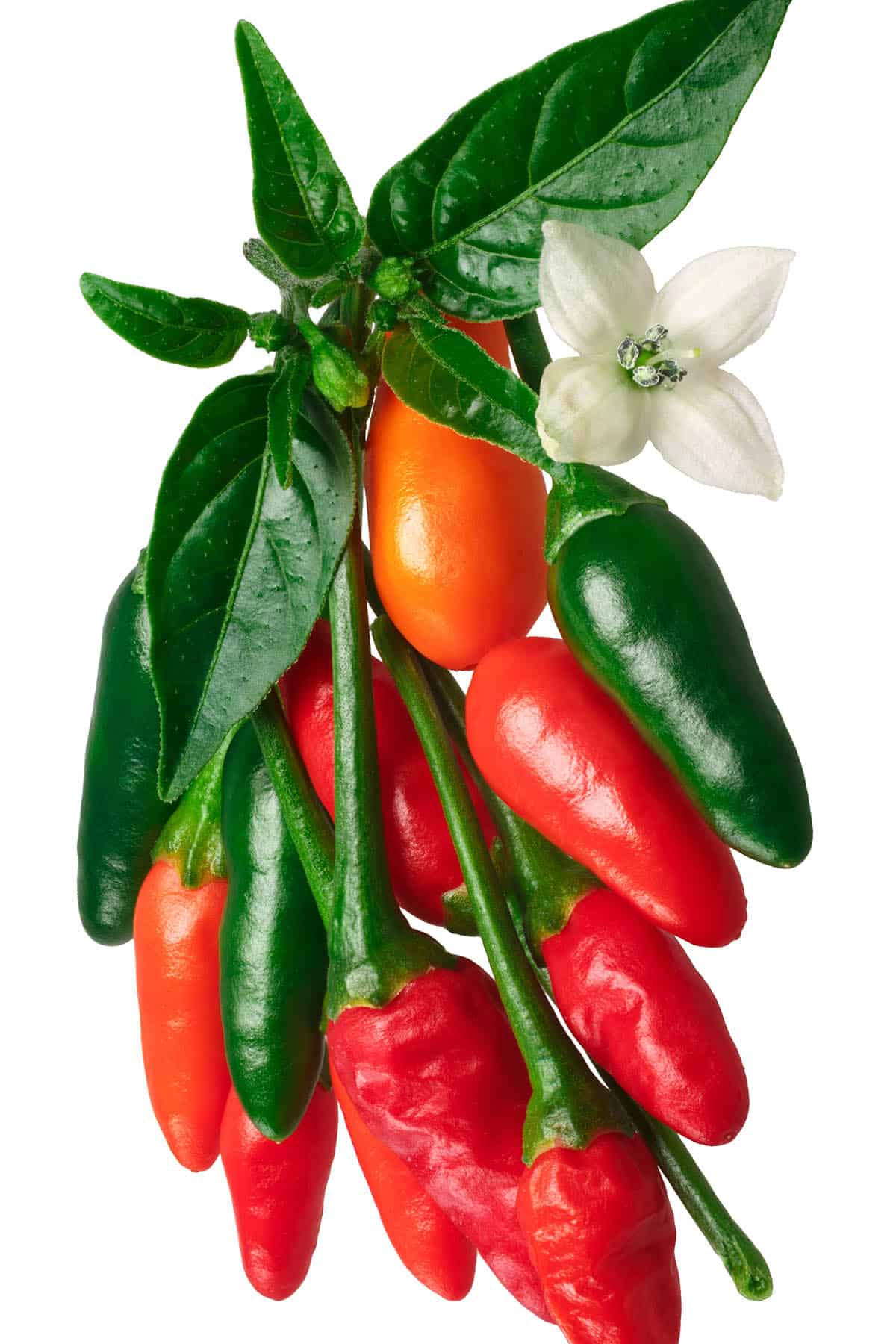Pequin peppers, or chili pequin (sometimes spelled “piquin”), are tiny peppers that mature from green to a vibrant red color, and offer up some serious heat. This pepper is also called the “Bird Pepper”, because it is consumed and spread by wild birds. It is a tiny pepper, (pequeno in Spanish means small or tiny) measuring only ½ to ¾ inches long, but don’t be fooled, this little chile packs quite a wallop. The heat continues to grow the longer the peppers stay on the plant. The hot peppers are harvest for commercial use in Mexico, where they are very popular, though they can be found growing locally in the southwestern U.S. and south America.
How Hot is a Pequin Pepper?
The pequin pepper measures in with a range of 30,000 SHU to 60,000 Scoville Heat Units on the Scoville Heat Scale. That is quite hot. Compare that to a the common jalapeno pepper, which averages 5,000 SHU and you’ll find the hottest chili pequin can reach 12 times hotter. It is closer to the heat of the bird’s eye pepper, or the more commonly known cayenne pepper. Bell peppers, as a reference, have 0 Scoville heat units (no heat).
Pequin Pepper Appearance
Pequin peppers are very small, measuring roughly 1/2 to 3/4 inch (2 cm) in length and 1/4 inch (1 cm) wide, and oval or oblong in shape. Pequin Peppers offer an excellent flavor with heat that is not overpowering when made into a hot sauce. In fact, the popular brand of hot sauce, Cholula, uses chili pequin in their sauce. Cooking with them can present a challenge, as they are quite small and you need to use a lot of them for any substantial amount of sauce, but they are worth cooking with for their flavor alone. Dried pequin chile peppers are a big commodity in Mexico and very popular for seasoning many dishes. The peppers are sold in both green and red forms for various uses.
Buy Dried Pequin Peppers Buy Pickled Pequin Peppers
Got any questions or comments? Ask away! Contact me anytime or leave your questions/comments below. I’d love to hear how you enjoy cooking with these wonderful peppers. NOTE: This page was updated on 6/2/20 to include new information and photos. It was originally published on 9/27/13.
